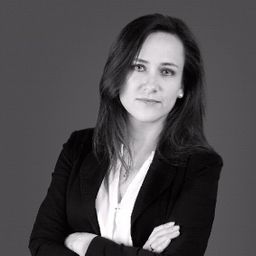The long and difficult process of industrial heritage based regeneration in the case of Petrila Colliery in Romania, Eastern Europe : industrial heritage as means to earning agency over the past and re-conquering a sense of belonging
My Session Status
What:
Paper
Part of:
When:
9:00 AM, martes 30 ago 2022
(20 minutos)
Where:
UQAM, pavillon J.-A. De Sève (DS)
- DS-R520
Industrial heritage in Romania has witnessed an encouraging increase of interest the past two decades. The survival of former industrial relics has started to concern a larger array of associative bodies all over the country and activities have been initiated having as a purpose saving what remains from the recently closed Romanian Industry.
Industrial Heritage in the context of Eastern European countries has, quite frequently, a number of particularities and the undertaking of finding a new purpose for the remains of industrial heritage can prove to be a lengthy and demanding process.
The presentation will partly build upon the theoretical framework developed through the phd research, looking at concepts such as the Authorised Heritage discourse (Smith, 2006), to investigate the difficulty in the acceptance of industrial heritage in the public narrative, at nostalgia and its potential consequences in helping insinuate a sense of belonging to the local community, the particular characteristics of Post-Socialist countries and the transition from a socialist economy to the free market economy, the bureaucracy and the understanding of property, illustrated by the hands-on experience in the case of Petrila, with the purpose of highlighting the importance of involving the community in the process. It will briefly explore the early stages of the project of raising awareness, involving the community, through the successful listing process and further concentrate on the laborious process of implementing subsequent to its designation as national level heritage.
Industrial Heritage in the context of Post Socialist countries bears an additional burden of difficult memories associated with it, inducing mixed feelings of rejection towards industrial heritage, modern movement heritage and all together the heritage overlaying this period.
Allegedly the oldest and most profound colliery in Romania, the first exploitation of Petrila has opened in 1859 (Wollmann, 2010), at a time when what used to be called ‘the colony’ (Baron, 1998) constructed around the future exploitation was a multicultural community, part of Austria-Hungary. Masses in pursuit of a better life, from different origins, such as Czech, Polish, Italian, Hungarian, Romanian were attracted by the promise of the ‘black diamond’ (Baron, 1998).
Petrila coal mine had been functioning for almost one century when the Romanian Socialist Party gained absolute power in 1948. What followed was an overly ambitious, at an extreme pace, industrial development, in the pursuit of utter autonomy, which resulted in 1989, at the fall of communism into a vast, out of date and derelict industrial legacy. The elongated head-frame and typical silhouettes of the buildings of Petrila colliery were among them.
Petrila is also a story about art and culture trying to bring to life the industrial heritage in spite of the setbacks and resistance from the administrative apparatus. The story concentrates around Ion Barbu, a well known artist and caricaturist and the community gathered around him. After seven years of workshops, national and international exposure and one documentary later, one major step has been recorded in January 2018 when, for the first time, all stakeholders were gathered at the same table, and thus, the first entity that would manage the site, Planeta Petrila Association was created. Today, whilst awaiting for the transfer of property from the Energy Ministry to the Department Council (a process that has taken almost three years), the first financing from the National Heritage Institute has been secured, for the first structural and architectural expertise, with the involvement of the community, of the only building belonging to the city of Petrila, the former washing and
preparation plant, this beautiful but fragile building with its typical round shaped cones. Hopefully, this would be a first step into a long series.
